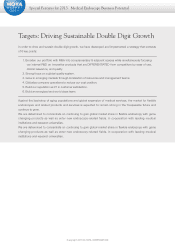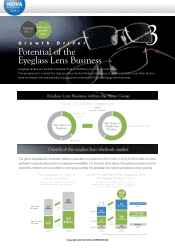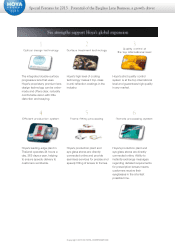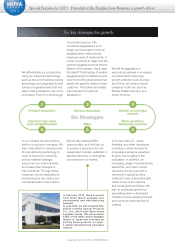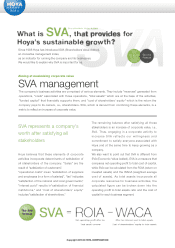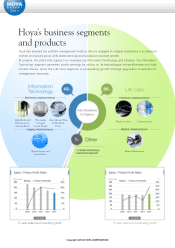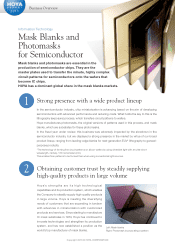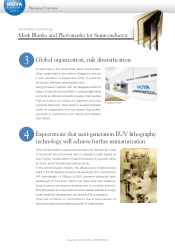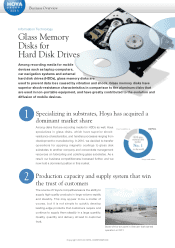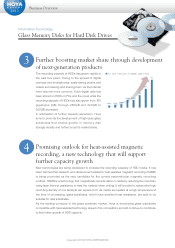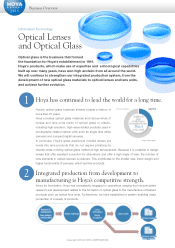Pentax 2013 Annual Report Download - page 26
Download and view the complete annual report
Please find page 26 of the 2013 Pentax annual report below. You can navigate through the pages in the report by either clicking on the pages listed below, or by using the keyword search tool below to find specific information within the annual report.
Copyright 2013 © HOYA CORPORATIONCopyright 2013 © HOYA CORPORATIONCopyright 2013 © HOYA CORPORATION
Aiming at maximizing corporate value
SVA management
SVA represents a company's
worth after satisfying all
stakeholders
Since 1998 Hoya has introduced SVA (Shareholders Value Added),
an innovative management index,
as an indicator for running the company and its businesses.
We would like to explain why SVA is important for us.
The company's business activities are comprised of various elements. They include "revenues" generated from
operations, "costs" associated with those operations, "total assets" which are at the base of the activities,
"funded capital" that financially supports them, and "cost of shareholders' equity" which is the return the
company pays to its owners, i.e., shareholders. SVA, which is derived from combining these elements, is a
metric to reflect an increase of corporate value.
Hoya believes that these elements of corporate
activities incorporate determinants of satisfaction of
all stakeholders of the company. "Sales" are the
result of "satisfaction of customers",
"operational costs" mean "satisfaction of suppliers
and employees (in a form of salaries)", "tax" indicates
"satisfaction of the national and local governments,"
"interest paid" results in"satisfaction of financial
institutions," and "cost of shareholders' equity"
includes "satisfaction of shareholders."
The remaining balance after satisfying all those
stakeholders is an increase of corporate value, i.e.,
SVA. Thus, engaging in a corporate activity to
i n cre a s e SVA r eflect s o u r w illi n g n e s s a n d
commitment to satisfy everyone associated with
Hoya and at the same time to keep growing as a
company.
We also want to point out that SVA is different from
EVA (Economic Value Added). EVA is a measure that
compares net operating profit to total cost of capital,
while SVA can be calculated from the ROIA (return on
invested assets) and the WACA (weighted average
cost of assets). As total assets incorporate all
corporate resources for business activities, the
calculated figure can be broken down into the
operating profit to total assets ratio and the cost of
capital for each business segment.





